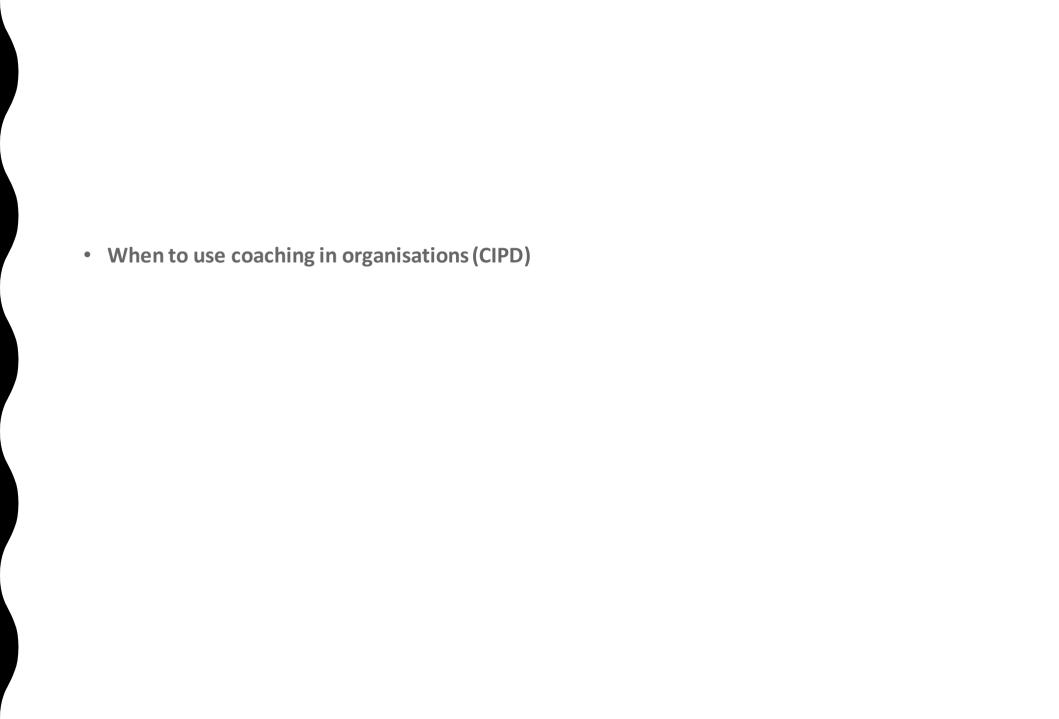
1 minute read
Assessment Criteria Learning Outcome Three
Assessment Criteria AC 3.5 Determine how coaching can support a range of development issues
Assessment Criteria AC 3.6 Determine how mentoring can support a range of development issues
Advertisement
The Command verb is Determine - - Settle/conclude an argument/question as a result of investigation or by referring to an authority.
Assessment Criteria Learning Outcome Three
Best Practice for AC 3.5 & AC 3.6
All assessment criteria must be addressed as individual pieces of evidence
3.5 & 3.6 Linking to AC 3.1, 3.2, 3.3 & 3.4 and thus the content proposed above, a worked example could relate to:
• Continuous Professional Development and the notion of the ‘learning organisation’. An appetite on the part of the individual and, institutionally, to create opportunities for lifelong learning and organisational development is well-served by the coaching and mentoring process due to its pervasive, embedded and enduring characteristics. An established coaching and mentoring culture can change the way the organisation provides development and how it addresses issues relating to development
Assessment Criteria Learning Outcome Three
Assessment Criteria AC 3.7 Evaluate the effect of coaching on organisational culture
Assessment Criteria AC 3.8 Evaluate the effect of mentoring on organisational culture
The Command verb is Evaluate - Consider the strengths and weaknesses, arguments for and against and/or similarities and differences. The writer should then judge the evidence from the different perspectives and make a valid conclusion or reasoned judgement. Apply current research or theories to support the evaluation when applicable.
Assessment Criteria Learning Outcome Three
Best Practice for AC 3.7 & AC 3.8
All assessment criteria must be addressed as individual pieces of evidence
3.7 & 3.8 These criteria are similarly linked to LO2 above but demonstrate the ‘reverse’ effect i.e. rather than organisational culture impacting and influencing on coaching and mentoring, how coaching and mentoring impact and influence the organisational culture.
An example is illustrated as follows:
• Silo’d working practices could be broken down through the use of coaching and mentoring due to the cross working and other practices it promotes such as communications, collaboration, relationship building, trust, respect, support, formalising informal networks, disseminating good practice, connectivity etc.
LO1 Be able to demonstratethe links between strategic performance and coaching and mentoring
Assessment Criteria 1.1 Identify the links between individual, team and departmental performance objectives and organisational strategic performance objectives







